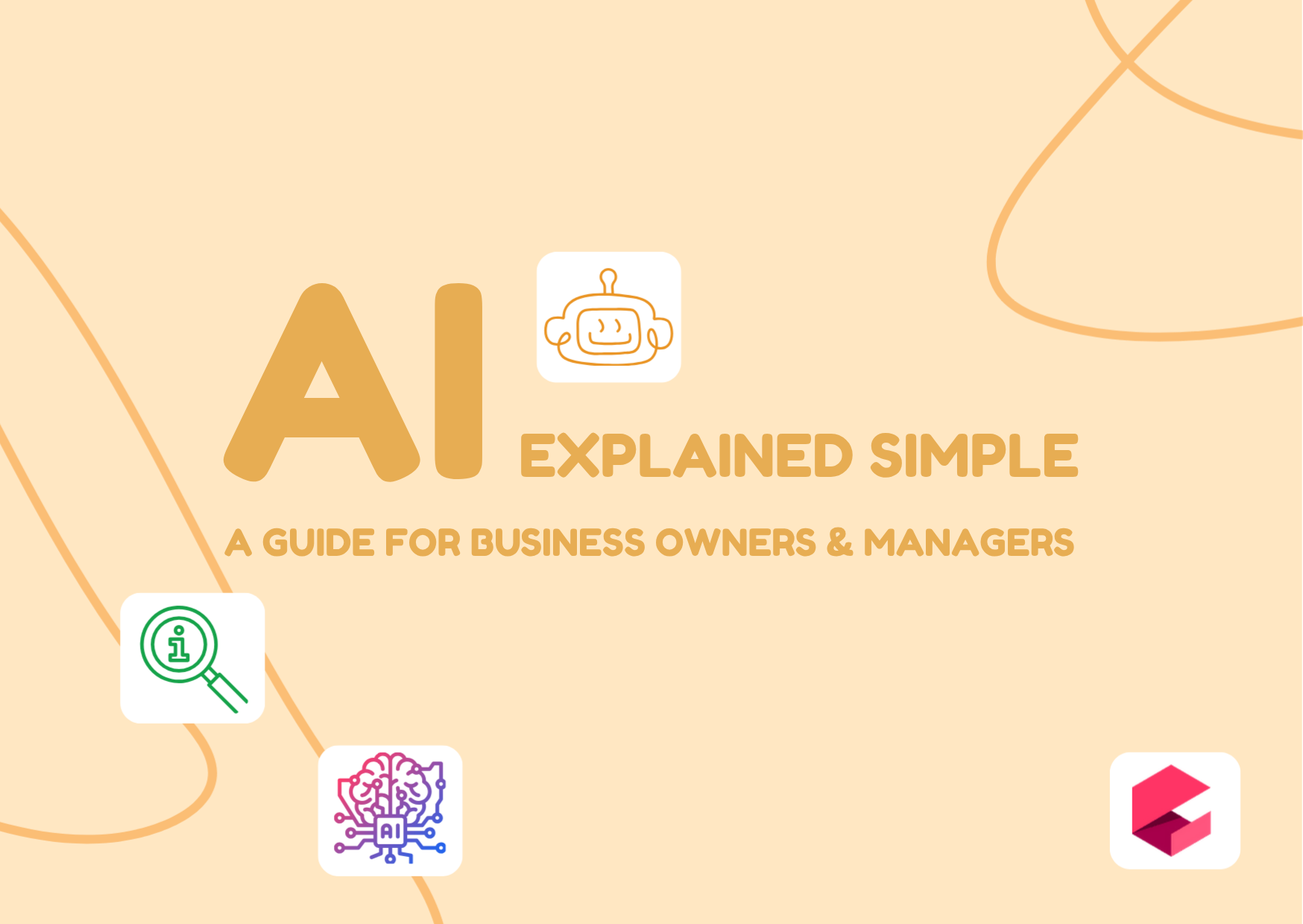Subscribe to our Blog
Get the latest posts in your email

Ah, Artificial Intelligence (AI). That magical future some fear will dominate the earth, while others just hope it will finally get their coffee order right. But let’s be real—AI is just an overpowered math geek that finally became cool. So, let’s break it down in a way that won’t make your brain crash.
Artificial Intelligence (AI) is the ability of computers to perform tasks that normally require human intelligence. These tasks include recognizing patterns, making decisions, processing language, and learning from experience. In simple terms, AI allows software to analyze data and act on it without needing constant human input.
But let me try to explain it with simple words...
Previously, developers were the only people who could communicate effectively with computers—they wrote programming code so the computer could understand human intentions. With AI, that has changed—now, computers understand our languages, so everyone can communicate with them in their own language. That's a massive shift! Finally, computers are for everyone.
To understand how AI works, let’s break down some fundamental concepts. While it may seem a bit unusual to compare AI to children, this analogy makes it easier to grasp.
What is an AI Model? An AI model is a program that has been trained to recognize patterns in data. Think of it like an experienced employee who has learned from past cases and can make decisions based on that knowledge.
A simplified explanation: When we raise and educate children, they learn to walk, talk, and eat on their own. Then they go to school to study languages, mathematics, physics, etc. In this process, their brains form neural networks that allow them to process and retain knowledge. AI models are like pre-trained neural networks, ready for use and always waiting for the next task.
However, remember that AI models don’t have their own agenda or initiatives. That’s how AI differs from humans.
How Does AI Store Data? A database is where information is stored. AI needs data to learn and make decisions, and this data is usually kept in structured databases or unstructured sources like documents and emails.
In tech, we have different types of databases, primarily SQL (which is like an advanced Excel spreadsheet). While tables, graphs, and reports are useful for human readability, they aren’t ideal for AI. This is where vector databases come in. AI processes data not by searching and comparing words or numbers but by working with vectors. (Yes! Those vector lessons in school might finally make sense!)
What is an AI Agent? An AI agent is a system that can act on its own based on given rules or learned behavior. For example, a chatbot that answers customer inquiries is an AI agent.
Imagine your child learning to walk and talk, gaining knowledge in languages, math, and other subjects, but still requiring specific instructions from you. These extra instructions shape their behavior. In AI, an agent is a trained model with additional rules. Just like you might tell your child, "Never swear," you can instruct an AI model with specific guidelines to follow. The difference? The AI agent will always listen to you—unlike a child!
Many small business owners think AI is only for large corporations, but that’s not true. In fact, small businesses are in a great position to benefit from AI. It helps businesses improve efficiency, reduce costs, and enhance customer satisfaction. Here’s how:
The cost of AI depends on the complexity of the solution. Here’s a rough estimate for small businesses:
Many AI services offer subscription-based pricing, making them affordable for small businesses without requiring large upfront investments.
At Composity, we are committed to staying at the forefront of SME trends. Follow us for more practical advice on Business, Technology, and AI.
AI is no longer a futuristic technology reserved for tech giants—it’s an accessible and powerful tool for small businesses. By leveraging AI, business owners can enhance efficiency, improve customer satisfaction, and drive growth. The key is to start simple. Play around with automation tools, explore AI-driven marketing, and slowly integrate it into your business.
If you’re a business owner looking to implement AI, consider starting with simple automation tools and working with AI consultants or service providers to find the right solutions for your needs.
Get the latest posts in your email
Empower your business with Composity !